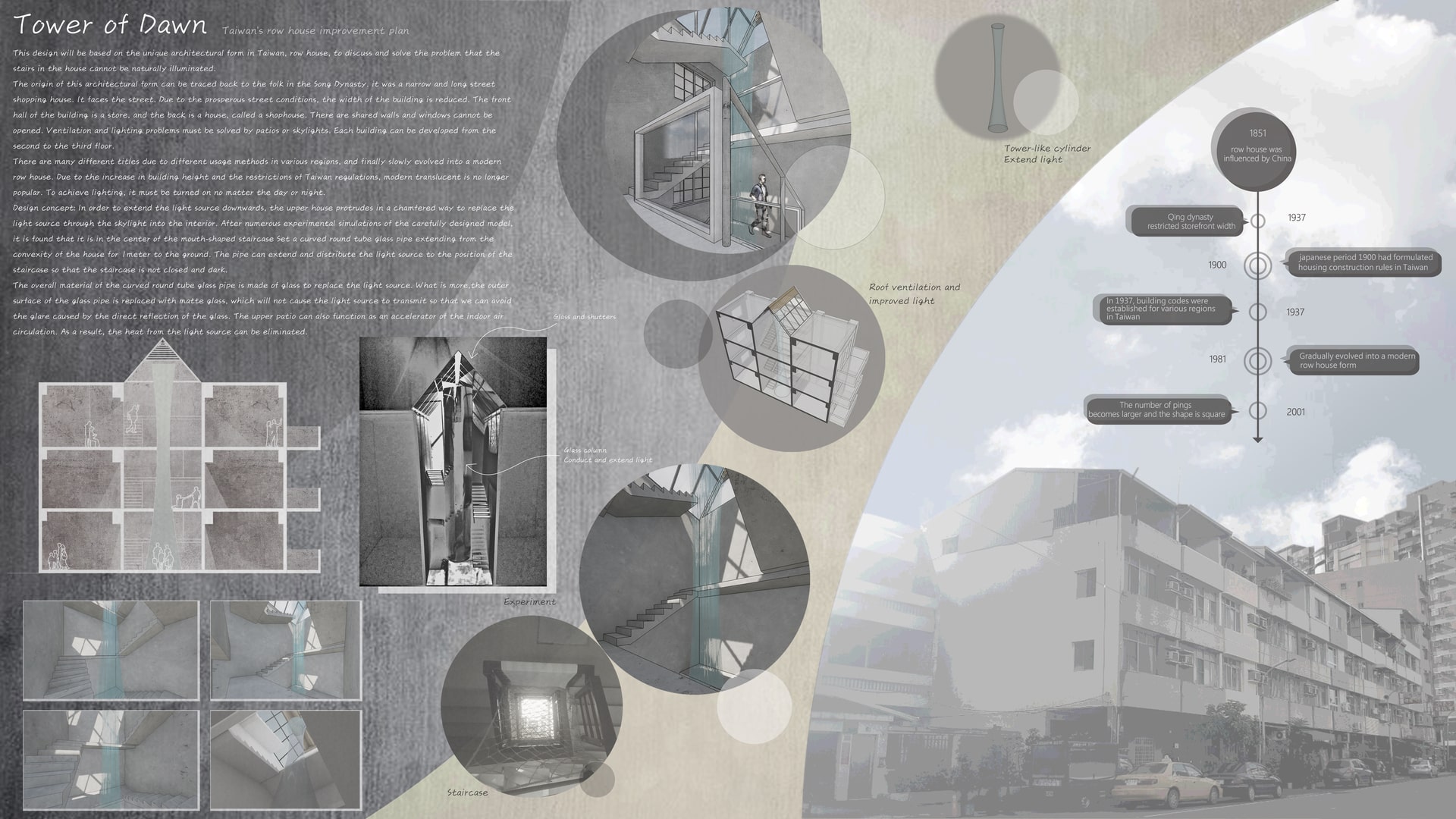Project Description
This design will be based on the unique architectural form in Taiwan, row house, to discuss and solve the problem that the stairs in the house cannot be naturally illuminated. The origin of this architectural form can be traced back to the folk in the Song Dynasty. it was a narrow and long street shopping house. It faces the street. Due to the prosperous street conditions, the width of the building is reduced. The front hall of the building is a store, and the back is a house, called a shophouse. There are shared walls and windows cannot be opened. Ventilation and lighting problems must be solved by patios or skylights. Each building can be developed from the second to the third floor. There are many different titles due to different usage methods in various regions, and finally slowly evolved into a modern row house. Due to the increase in building height and the restrictions of Taiwan regulations, modern translucent is no longer popular. To achieve lighting, it must be turned on no matter the day or night. Design concept: In order to extend the light source downwards, the upper house protrudes in a chamfered way to replace the light source through the skylight into the interior. After numerous experimental simulations of the carefully designed model, it is found that it is in the center of the mouth-shaped staircase Set a curved round tube glass pipe extending from the convexity of the house for 1meter to the ground. The pipe can extend and distribute the light source to the position of the staircase so that the staircase is not closed and dark. The overall material of the curved round tube glass tube is glass to replace the light source. The outer surface is replaced with matte glass, which will not cause the light source array, and can avoid the glare caused by the direct reflection of the glass. The upper patio can accelerate the indoor air circulation and eliminate The heat from the light source. 本次設計將以台灣特有建築形式,透天厝的演變,進行探討並解決房屋內樓梯無法自然照明的問題。 此建築形式起源可以追朔至宋朝民間,為一種狹長式的市街商店住宅,面臨街道,因街況繁榮,故將面寬縮小,建築前廳作為商店,後方則是住宅,稱為店屋,左右有共用壁體,無法開窗,通風及採光問題須靠天井或天窗解決,每棟均可向上二至三樓發展。 因各區域不同使用方式而有眾多不同稱號,最後慢慢演變成現代透天厝,因樓高增加及台灣法規限制,現代透天不再盛行梯間設有天窗增加採光,而是直接架設燈具達到照明,造成無論白天或是夜晚都必須開燈。 設計概念:為了將光源向下延伸,上方屋凸以斜切方式最大限度的將光源藉由天窗引導進入室內,在做了無數次模型的實驗模擬後,發現當在口型梯間中央設置一座從距離屋凸1公尺延伸至地面的曲型圓管狀玻璃導管,導管便可以將光源延伸並分散至梯間各處使梯間不在陷入黑暗。 曲型圓管狀玻璃導管整體材質為玻璃來傳導光源,外層表以霧面玻璃包覆,既不會引響光源傳導,又可以避免玻璃直接反射造成的眩光,上方天井可以加速室內空氣循環通風,消除光源帶來的熱度。
